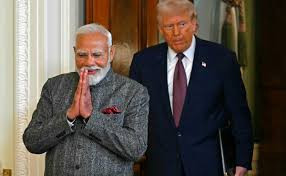Punjab-Based YouTuber Arrested on Espionage Charges Over Links to Suspected Agent Jyoti Malhotra
IIE DIGITAL DESK : The dramatic turn of events that has raised alarms within national security circles, a Punjab-based YouTuber with alleged ties to a suspected agent, Jyoti Malhotra, has been arrested on charges of espionage. The arrest, carried out by central intelligence agencies in coordination with local law enforcement, has brought to light a suspected network involved in leaking sensitive information to foreign handlers.
The accused, identified as Gagan Verma, a resident of Ludhiana and the operator of a regional news-focused YouTube channel, was taken into custody following an extensive investigation into his frequent and reportedly covert interactions with Jyoti Malhotra. Malhotra, whose activities have long been under the scanner of Indian intelligence agencies, is believed to be part of a larger espionage ring with links across international borders.
Verma, in his mid-30s, had gained modest popularity through his online content, often focused on local politics, military developments, and social commentary. While initially viewed as harmless independent journalism, his channel began drawing suspicion when analysts noticed unusual patterns in the timing and subject of his posts, often coinciding with restricted military movements or classified government decisions.
Sources within the intelligence community revealed that Verma had been under surveillance for months. His communication logs reportedly show frequent contact with Malhotra, both through encrypted messaging platforms and in-person meetings. Authorities allege that these interactions were used to exchange confidential information pertaining to Indian defense establishments and internal security measures.
According to officials, Verma’s involvement appears more deliberate than accidental. It has been alleged that he received monetary compensation for his services from unidentified foreign sources. Investigators are also exploring whether Verma acted as a courier or digital conduit, transmitting sensitive data obtained through social engineering and deceptive tactics.
Jyoti Malhotra, a former media professional turned alleged double agent, is said to have operated under the guise of investigative journalism while cultivating sources within administrative and defense circles. Her reported closeness to multiple individuals in public life had made her a figure of interest for a long time. While Malhotra is not yet in custody, a red alert has been issued for her and efforts are underway to trace her exact location.
A senior intelligence officer, speaking on condition of anonymity, stated: “This case reveals the evolving threat landscape where digital platforms, independent content creators, and disinformation can be weaponized for espionage. The arrest is a significant step in dismantling a network that appears to have operated both online and offline.”
Verma has been booked under multiple sections of the Official Secrets Act and the Indian Penal Code. A magistrate’s court has granted a 10-day remand to allow investigators to probe deeper into the extent of the espionage operation. Forensic teams are currently analyzing his digital devices for further leads, including email communications, encrypted files, and cryptocurrency transactions.
The case has also reignited discussions around content regulation and the need for oversight in the digital news space, especially concerning creators with access to politically sensitive information. Many have expressed concern about the ease with which hostile actors can infiltrate domestic platforms under the pretense of journalism or activism.
The Ministry of Home Affairs has reportedly asked for a detailed report from central intelligence agencies regarding the network's operation and its possible foreign sponsors. Meanwhile, the YouTube channel in question has been taken offline, and law enforcement agencies are calling on viewers who may have interacted with Verma to come forward with any relevant information.
As investigations continue, the case is poised to unravel a larger network of digital operatives possibly operating across multiple states, blurring the lines between journalism, activism, and espionage in an increasingly connected world.
You might also like!
















